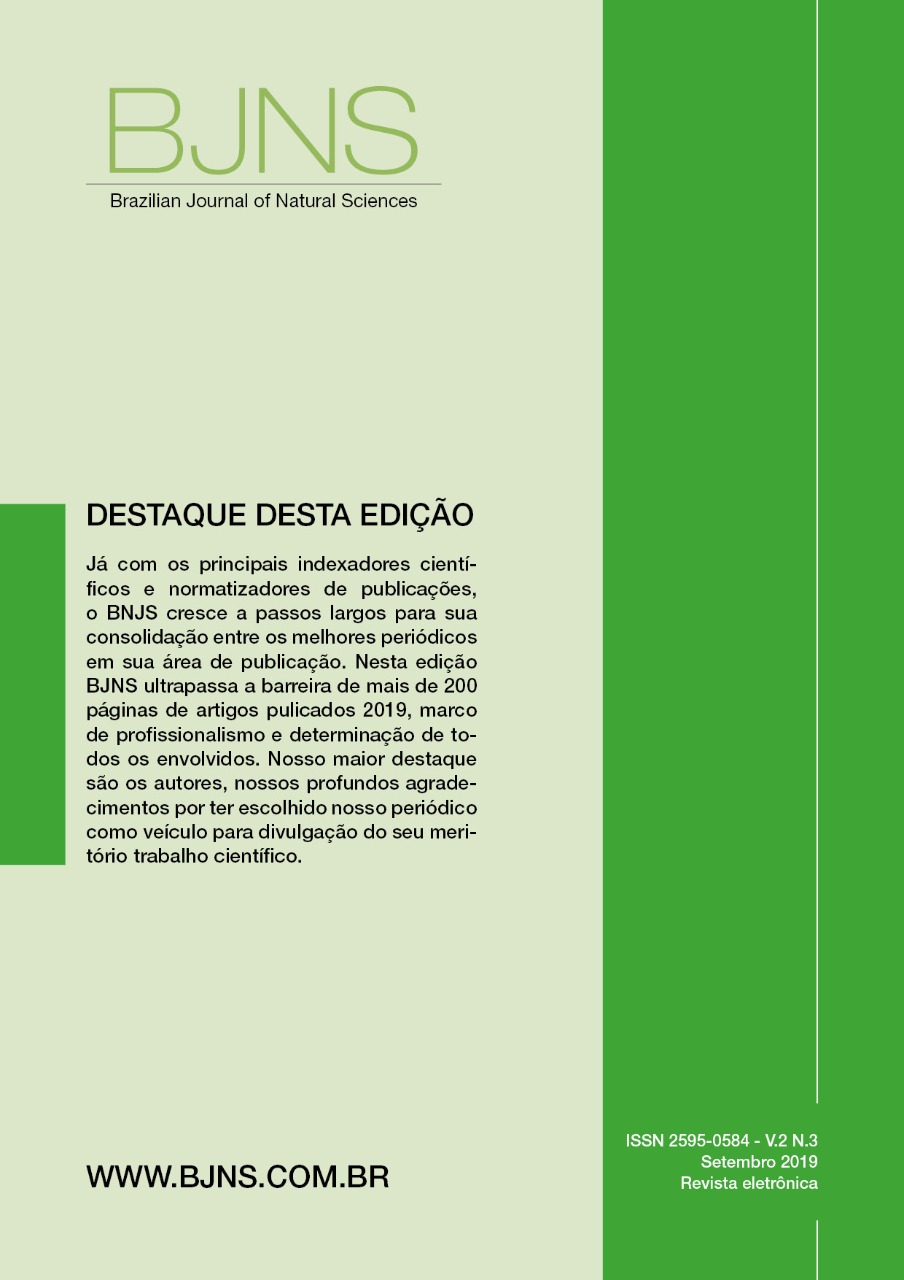Análise dos parâmetros físico – químicos e organolépticos de sabonetes líquidos íntimos
Main Article Content
Abstract
ABSTRACT: The female genitalia has many characteristics among them is to have acid pH and be constituted by microorganisms that are responsible for keeping this region healthy and free of odors. However, the proper sanitization of this region is important and should be done with suitable products among them are the intimate liquid soaps. Formulations that are well prepared, stable, approved and classified as grade 2 cosmetics by ANVISA. However, many errors are still found in cosmetic products, in the misuse of quality, appearance, stability and in labeling with lack or excess of information. Therefore, the objective of the study was to analyze the physical-chemical and organoleptic parameters of intimate liquid soaps marketed in drugstores, in accordance with ANVISA standards and the specifications described in its labeling, and for this purpose they were carried out for 3 months, at intervals of 15 15 days stability tests. pH, viscosity, density and organoleptic characteristics, in order to verify if there were changes. At the end of the 90 days, it was observed that the 10 intimate liquid soaps showed no relevant changes in both the physical-chemical and organoleptic characteristics. With regard to the evaluation of the labels, ie in the primary packaging, all contained the mandatory information among them all ingredients that are in the international nomenclature of cosmetic ingredients (INCI), having registration number, expiration date, pH value between others. At the end of the study it was possible to verify that there was no alteration in the formulation and no irregularity in the labels, presenting an acceptable result and within ANVISA specifications.
KEYWORDS: Cosmetics; Genitalia, Female; Cosmetic Stability; Cosmetic Labeling .
Article Details
Copyright Statement - Policy Proposal for Open Access Journals
Authors who publish in the Brazilian Journal of Natural Sciences (BJNS) agree to the following terms: 1 - Authors retain the copyright and grant the journal the right to first publication, with the work simultaneously licensed under the Creative Commons Attribution License allowing sharing of the work with recognition of the authorship of the work and initial publication in this journal. 2 - Authors are authorized to assume additional contracts separately, for non-exclusive distribution of the version of the work published in this journal (eg, publishing in institutional repository or as a book chapter), with acknowledgment of authorship and initial publication in this journal. 3 - Authors are allowed and encouraged to publish and distribute their work online (eg in institutional repositories or on their personal page) at any point before or during the editorial process, as this can generate productive changes, as well as increase the impact and citation of published work. This is an open access article under the CC-BY license
References
Schalka S, Reis VMS. Avaliação comparativa de segurança e eficácia para produtos de higiene íntima em mulheres na menopausa. São Paulo: Copyright Moreira Jr. Editora, 2011 v.70, n.10, p. 372-376, 2013. DOI: 10.1590/S0365-05962011000300013.
FEBRASCO. Guia prático de condutas sobre higiene genital feminina. São Paulo, 2009.
ChenY, Brunung E, Rubino, J. Role of female intimate hygiene in
vulvovaginal health: Global hygiene practices and product usage. Parkway, Montvale, USA, Women’s Health, v.13: 1–10, 2017. DOI: 10.1177/1745505717731011.
Lopes AC, Moraes A, Oliveira AFR, Guimaraes BP, Oliveira CF, Betim FCM, Martinez AL, Bobek, VB. Análise físico-química comparativa de sabonetes líquidos. Visão Acadêmica, 19(2): 84-89, 2018. DOI: 10.5380/acd.v19i2.58026.
Felix NS, Cabral LP, Fernandes WS, Biazzi LSA. Analise das características físico-químicas e organolépticas de sabonetes líquidos íntimos femininos. Revista Univap, 22(40), 619, 2017. DOI: 10.18066/revistaunivap.v22i40.1283.
Campos VMC. Sabonete líquido íntimo: informa sobre o processo de produção do sabonete líquido íntimo. Fundação Centro Tecnológico de Minas Gerais – CETEC, 2007.
Silva KER, Alves LDS, Soares MFR, Passos RCS, Faria AR, Rolim Neto PJ. Modelos de avaliação da estabilidade de fármacos e medicamentos para a indústria farmacêutica. Revista de ciências farmacêuticas básica e aplicada, 30(2), 129-135, 2017.
Mirco J, Rocha MSD. Estudo de estabilidade de medicamentos. Rev Acadêmica Oswaldo Cruz, 2 (7), versão online.
Caneshi CA, Polonini HC, Brandão MAF, Raposo NRB. Análise de rotulagem de produtos fotoprotetores. Rev. Bras. Farm. 92(3): 208-212, 2011.
Rito PDN, Presgrave RDF, Alves EM, Villas BMHS. Perfil dos desvios de rotulagem de produtos cosméticos analisados no Instituto Nacional de Controle de Qualidade em Saúde entre 2005 e 2009. Vig Sanit Debate, 2014, DOI: 10.3395/vd.v2i3.199.
Agência nacional de vigilância sanitária (Brasil). Guia de estabilidade de produtos cosméticos. Brasília: 2004. Série Qualidade em Cosméticos. v.1. Maio 2004.
Agência nacional de vigilância sanitária (Brasil). Guia de controle de qualidade de produtos cosméticos. 2ª ed. Brasília, p.120, 2008.
Cronemberger PR, Paula SC, Meirelles LMA. Análise de sabonetes líquidos íntimos /Analysis of intimate liquis soaps. Teresina: Rev. Saúde em foco, v. 2, n. 1, art. 4, p. 49-59, jan./jul. 2015, 2(1), 49-59.2015,
Corrêa NM., Camargo Júnior FB, Ignácio RF, Leonardi,GR. Avaliação do comportamento reológico de diferentes géis hidrofílicos. São Paulo: Revista Brasileira de Ciências Farmacêuticas, 2005 41(1), 73-78. DOI: 10.1590/S1516-93322005000100008
Oliveira BDM, Melo Filho JM, Afonso JC. Density and the evolution of the densitometer. Revista Brasileira de Ensino de Física, 2015 35 (1), 1-10. DOI: 10.1590/S1806-11172013000100024.
McGregor J A, French JI, Parker R, Draper D, Patterson E, Jones W, McFee J. Prevention of premature birth by screening and treatment for common genital tract infections: results of a prospective controlled evaluation. American journal of obstetrics and gynecology, 1995 173(1), 157-167.DOI: 10.1016/0002-9378(95)90184-1.
Çengel YA. Mecânica dos fluidos: fundamentos e aplicações. São Paulo: AMGH Editora Ltda. 2015. p.51-52.


